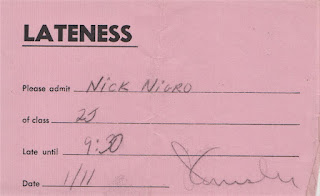Nowadays, the obituaries are chock full of so many personalities who were—once upon a time—young. It’s downright unsettling. Men and women who were in their prime when I was a boy are passing away. I wasn’t a hockey fan, but I knew of Rod Gilbert, who died this week at the age of eighty. I knew he was a future Hall of Famer and distinctly remember his hockey card with the bright green backdrop.
During my youth, my favorite pastime was the American
pastime at the time: baseball. It seems like a day doesn’t go by without a former baseball player—an
athlete whom I rooted for or against—dying or getting diagnosed with Alzheimer’s.
Recently, I read where J.R. Richard, Rennie Stennett, and Dick Tidrow passed
away. James Rodney Richard struck out over three hundred batters in 1978 and
1979 and had a major stroke the next year at the age of thirty, which prematurely ended his
career. Rennie Stennett went seven for seven in a game, a record that still
stands. And when Dick Tidrow pitched for the Yankees in the mid- to late-70s,
my older brother imitated his distinctive windup and mannerisms while playing
stickball. These little snippets of memory were so fresh because—honestly—it seemed
like only yesterday when Richard, Stennett, and Tidrow were professional
baseball players plying their trades.
Several weeks ago, an aunt of mine passed away two months shy of her 101st birthday. From the Spanish flu to COVID-19, her life began in a picturesque mountain town in Italy, Castelmezzano, before she emigrated to the shores of America in 1926 at the age of six. She lived through the Great Depression and then World War II—"the war to end all wars,” World War I, didn’t quite live up to its billing. Eventually, my aunt labored as a seamstress in New York City’s thriving Garment District for decades until her retirement in 1985. She collected a Social Security check for thirty-five years, an impressive feat in and of itself.
My aunt’s hobbies included walking, cooking, and baking. She made homemade pasta, meatballs, and tomato sauce called “gravy”—an Italian thing. The woman produced cakes and pastries that were uniquely hers like Graham cracker crust chocolate pudding pie, cream puffs filled with vanilla pudding, and oatmeal cake with two cups of sugar—one white and one brown. Strange, though, when people pass away, their lifetime of accumulations don’t go with them. Upon her death, my aunt’s spice closet was brimming with every imaginable spice, including multiple bottles of the same ones. Some bottles were unopened. As her cooking acumen took a hit in her final years —it stands to reason—so did her spice use. Many of those spice bottles had lapsed expiration dates going back twenty years.
Cleaning out her spice cabinet struck me as emblematic
of what’s in store for me and, yes, just about everybody else. I have all kinds of things
that have meaning to me but won’t have meaning to anybody else. I won't have a presidential-like museum in which to donate my photos, bric-a-brac,
and papers, including old test papers from St. John’s grammar school, Cardinal
Spellman High School, and Manhattan College.
I know my aunt had every intention of using the three bottles of bay leaves in her spice closet. But the finite end—in store for all of us—had other plans. So, from this day forward, I am gradually divesting myself of many of my material possessions and assorted ephemera. I like the thought of me getting rid of me. There is more dignity involved in this do-it-yourself exercise. After all, in writing the final chapter, who better than I to recycle my high school trigonometry tests?
(Photos from the personal collection of Nicholas Nigro)



























